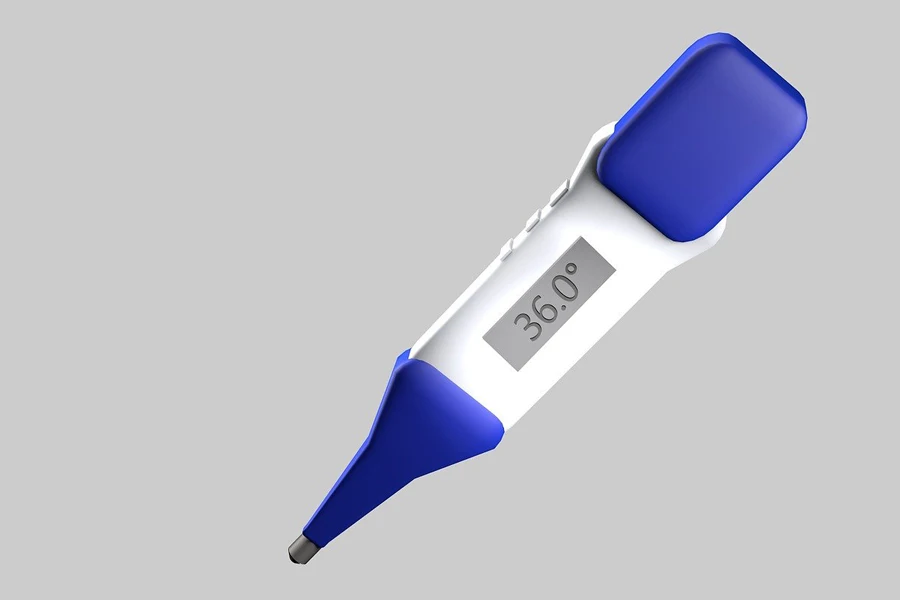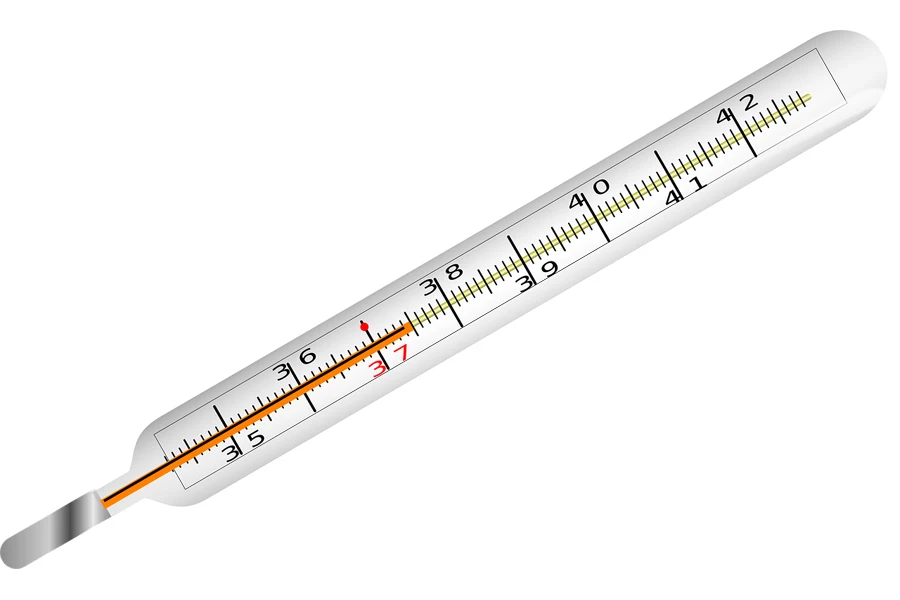Table of Contents
1. Introduction
2. Market Overview
3. Different Types and Their Features
4. Things to Consider When Selecting Products
5. Conclusion
Introduction
Selecting the right thermometer is crucial for accurate health monitoring. In 2025, advancements in technology have led to a variety of thermometers, each offering unique features to cater to different needs. From no-touch infrared models to versatile multi-mode devices, the options are vast and can be overwhelming. This guide will help you navigate the market trends, understand different types, and identify key considerations for choosing the best thermometer. Make informed decisions to ensure precise and reliable temperature readings for your household or business.
Market Overview

Market Scale and Growth:
The global thermometer market has seen significant growth, with a market size valued at USD 1.1 billion in 2023 and projected to reach USD 1.5 billion by 2028, according to Grand View Research. The market is expected to grow at a Compound Annual Growth Rate (CAGR) of 6.5% from 2023 to 2028. This growth is driven by increasing healthcare awareness, the need for precise health monitoring tools, and technological advancements in thermometer design and functionality.
Market Shares:
Major players in the thermometer market include Braun, Omron, and Kinsa, which hold significant market shares. Braun is known for its high-quality ear thermometers, while Omron and Kinsa are recognized for their innovative digital and smart thermometers. The market share distribution reflects the dominance of these brands, with Braun leading due to its reliability and extensive product range.
Market Changes:
Recent trends and innovations in thermometer technology include the development of no-touch infrared thermometers and smart thermometers with app connectivity for real-time data tracking. The impact of global health events, such as the COVID-19 pandemic, has significantly increased the demand for thermometers, as routine temperature checks became essential for monitoring public health. This surge in demand has accelerated technological advancements and expanded the availability of advanced thermometers in the market.
Different Types and Their Features

Forehead Thermometers:
Forehead thermometers utilize infrared technology to measure the heat emitted from the forehead. This technology allows for no-contact temperature readings, making them ideal for use with children or in settings where hygiene is paramount. According to Health.com, these thermometers provide quick readings, typically within one to two seconds, and are user-friendly with features like color-coded displays and silent modes for taking readings without disturbing the patient.
Ear Thermometers:
Ear thermometers, also known as tympanic thermometers, measure the infrared heat generated by the eardrum and surrounding tissue. They are known for their accuracy and are often used in clinical settings. According to Tom’s Guide, ear thermometers are ideal for young children and adults due to their quick and reliable readings. However, they require proper positioning to ensure accurate results, and they are not recommended for newborns.
Oral Thermometers:
Oral thermometers are traditional devices that measure temperature through the mouth. These thermometers are reliable and widely used due to their accuracy. As noted by Health.com, they are suitable for older children and adults who can hold the thermometer under their tongue. However, they can be less convenient for very young children or patients who cannot remain still for the necessary duration to get an accurate reading.
Axillary and Rectal Thermometers:
Axillary (underarm) and rectal thermometers are used for specific age groups and situations where precise measurements are crucial. Rectal thermometers are considered the gold standard for infants and small children due to their high accuracy. Axillary thermometers are less invasive but generally less accurate than oral or rectal methods. According to Tom’s Guide, rectal thermometers are particularly useful for infants, while axillary thermometers offer a more comfortable but slightly less precise alternative.
Multi-mode Thermometers:
Multi-mode thermometers combine the functionalities of forehead, ear, and sometimes oral thermometers, offering versatility and convenience. These devices allow users to switch between different modes depending on the situation. According to Health.com, the iProven DMT-489 is an example of a multi-mode thermometer that provides both ear and forehead readings, featuring quick response times and color-coded fever alerts. These thermometers are particularly useful for families with diverse needs, providing flexibility in one device.
Things to Consider When Selecting Products

Accuracy and Response Time:
The accuracy and response time of a thermometer are critical factors to consider, as they ensure reliable health monitoring. Quick readings are particularly important when dealing with children or patients who may be uncooperative or restless. According to Health.com, infrared forehead thermometers typically provide results within one to two seconds, making them highly efficient. Ear thermometers also offer quick and accurate readings but require proper positioning to maintain accuracy. Oral and rectal thermometers, while reliable, often take longer to provide readings, which may be less convenient in urgent situations.
Ease of Use and Readability:
User interface and display features significantly impact the usability of a thermometer. Devices with large, backlit displays are easier to read in low-light conditions, which is essential for taking temperatures at night. Silent modes allow for discreet temperature checks without disturbing the patient, particularly useful for children. According to Tom’s Guide, the iHealth No-Touch Forehead Thermometer features an intuitive design with a clear LED display and silent operation, enhancing user experience. The inclusion of color-coded displays also aids in quickly identifying fever levels.
Additional Features:
Modern thermometers often come with additional features like memory storage and app connectivity, allowing users to track temperature readings over time. This is particularly beneficial for managing chronic conditions or monitoring recovery from illness. Devices such as the Kinsa QuickCare Smart Digital Thermometer sync with mobile apps to record and analyze temperature data, providing personalized health insights. Features like fever alerts and color-coded displays further enhance functionality by offering immediate visual cues about the patient’s condition.

Price and Value for Money:
The cost of a thermometer can vary widely, from budget-friendly models to premium devices with advanced features. When selecting a thermometer, it is important to balance cost with the features offered. According to Tom’s Guide, basic digital thermometers like the Femometer Digital Thermometer are affordable and reliable for everyday use, while higher-end models like the Kinsa QuickCare offer smart connectivity and additional functionalities. Evaluating your specific needs and budget will help determine the best value for money.
Hygiene and Maintenance:
Maintaining hygiene is crucial, especially for thermometers used by multiple people. Different types of thermometers have varying cleaning requirements. According to Health.com, infrared and no-contact thermometers require minimal maintenance since they do not touch the skin. In contrast, oral and rectal thermometers need thorough cleaning after each use, with some models offering disposable covers to ensure hygiene. Ensuring easy sanitization methods will help maintain the accuracy and longevity of the device.

Conclusion
Choosing the best thermometer in 2025 involves understanding the market landscape, recognizing the different types and their specific features, and considering crucial factors such as accuracy, ease of use, and additional functionalities. By evaluating these aspects, you can select a thermometer that meets your specific health monitoring needs, ensuring reliable and efficient temperature readings for your household or business. Making an informed decision will provide peace of mind and contribute to better health management.




